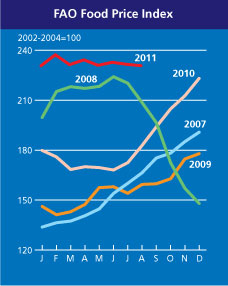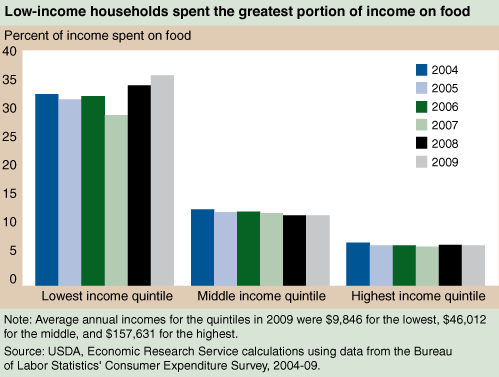
Seeing as to how I am on the topic of food prices today:
The Food and Agriculture Organization (FAO) of the United Nations’ food price index averaged 231 points in August 2011, nearly unchanged from July and 26 percent higher than in August 2010. The FAO cereal price index averaged 253 points in August, up 2.2 percent, or 5 points, from July and 36 percent higher than in August 2010. The FAO oils and fats price index averaged 244 points in August, following a declining trend since March but still remaining high in historical terms. The FAO dairy price index averaged 221 points in August, significantly down from 228 points in July and 232 points in June but still 14 percent higher than the same period last year. The FAO meat price index averaged 181 points in August, up 1 percent from July. The FAO Sugar Price Index averaged 394 points in August, down 2 percent from July, but still 50 percent higher than in August 2010.
More here (link opens a .pdf document). Overall, this is not very reassuring considering that the world’s poor mostly consume cereals and that the cereal price index is the one sub-index that keeps increasing.

